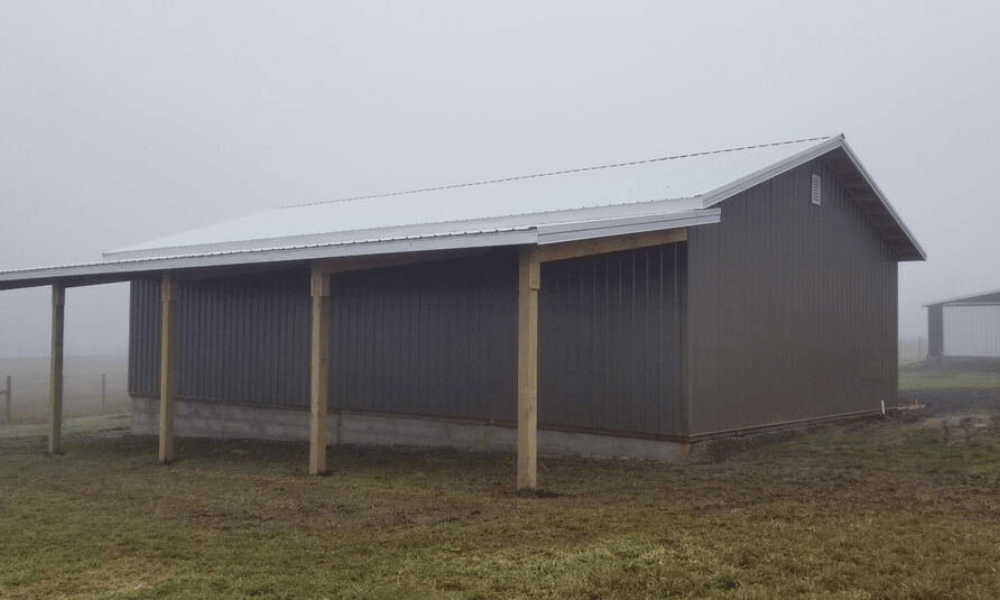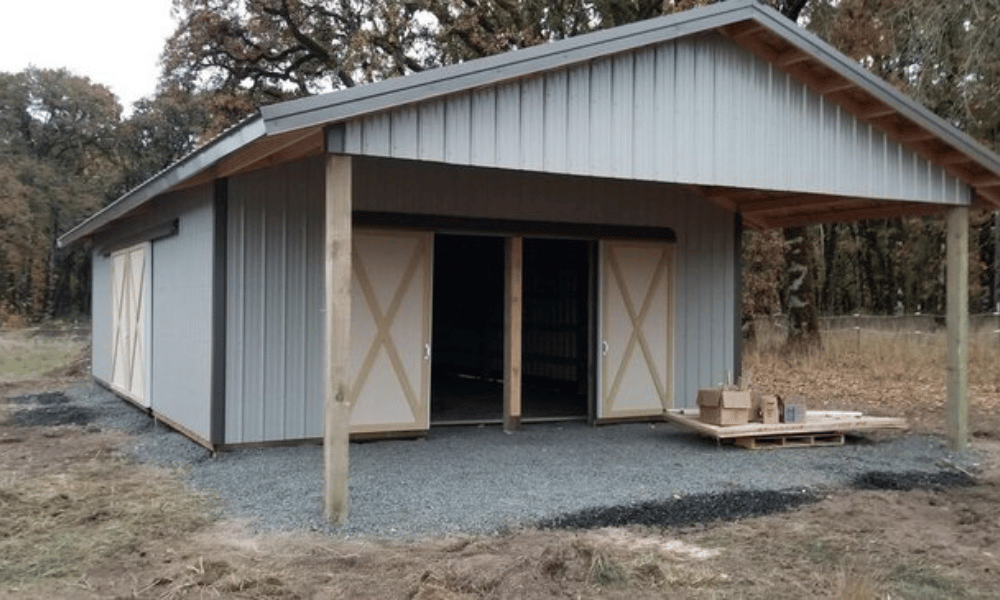Introduction
Fashion enthusiasts know that a well-organized wardrobe is crucial for showcasing their beloved collections. However, storing clothes and textiles in a pole barn presents unique challenges – from temperature fluctuations to humidity control. But fret not! This article will provide you with invaluable tips for clothing and textile storage in your pole barn, ensuring your fashion treasures are preserved in pristine condition. Whether you're an avid collector or just someone who loves fashion, these tips will help you maintain your pieces like the true enthusiast you are.
Understanding the Importance of Proper Storage in a Pole Barn
Why Choose a Pole Barn for Clothing Storage?
A pole barn offers ample space and flexibility, making it an attractive option for those looking to store their clothing and textiles. With its high ceilings and open layout, you can customize the space to fit your needs perfectly. But why is proper storage so important?
Protection from Elements: Unlike conventional homes, pole barns often lack climate control. This makes it crucial to implement strategies that protect your garments from moisture, pests, and temperature changes.
Maximizing Space: An organized storage system can dramatically increase your usable space, allowing you to display more items without cluttering your environment.
Preserving Quality: Properly stored textiles will last longer, maintaining their quality and aesthetic appeal.
Key Considerations When Storing Clothing in a Pole Barn
When setting up your clothing storage system in a pole barn, consider these key factors:
- Temperature Control: Fluctuating temperatures can lead to fabric wear over time. Humidity Levels: High humidity can lead to mold growth and fabric degradation. Pest Management: Insects can wreak havoc on textiles if not properly managed.
Clothing & Textile Storage Tips For The Fashion Enthusiasts’ Pole Barn
1. Assess Your Space Before Organizing
Before diving into storage solutions, take a good look at your pole barn's layout:
- Measure available space Identify areas prone to moisture or humidity
This assessment will help you determine how best to organize your clothing collection.
2. Create Zones for Different Types of Textiles
Different fabrics have varying needs when it comes to storage:
- Cotton: Breathable but must be stored dry. Silk: Requires dark environments to prevent fading.
Designate zones based on the specific requirements of each textile type.
3. Use Appropriate Storage Containers
The right containers can make all the difference:
- Opt for breathable fabric bags or boxes instead of plastic. Avoid cardboard as it attracts pests.
Here’s a quick table summarizing the best storage options by material type:
| Material Type | Best Storage Option | Notes | |---------------|------------------------|--------------------------------| | Cotton | Fabric bins | Ensure they're breathable | | Silk | Acid-free boxes | Protect from light exposure | | Wool | Wool bags | Keep away from moths |

4. Maintain Optimal Humidity Levels
Humidity plays a significant role in textile preservation:
- Aim for 30%-50% relative humidity. Use dehumidifiers if necessary.
5. Implement Climate Control Measures
If possible, consider investing in simple climate-control devices such as:
- Fans for air circulation Heaters during cold months
Organizational Strategies for Your Pole Barn Wardrobe
6. Utilize Vertical Space Wisely
Your pole barn likely has high ceilings—capitalize on this!
- Install shelves or racks Hang long garments like dresses or coats
This prevents clutter and maximizes available space.
7. Invest in Quality Hangers
Not all hangers are created equal:
- Wooden hangers offer sturdiness but ensure they’re smooth to prevent snags. Avoid wire hangers which can distort garment shapes over time.
8. Rotate Seasonal Items Regularly
Fashion is seasonal; thus rotating items is essential!
- Store summer wear during winter months and vice versa.
This keeps your wardrobe manageable and fresh.
Protecting Your Garments From Pests
9. Identify Common Textile Pests
Familiarize yourself with common pests that https://daltonafvr142.mystrikingly.com/ target clothing:
Moths Silverfish Bed bugsUnderstanding these threats allows you to take preventive measures effectively.
10. Implement Preventive Pest Measures
Preventing infestations is easier than dealing with one later:
- Use cedar blocks or lavender sachets throughout storage areas.
These natural deterrents keep pests at bay without harsh chemicals.
Cleaning Before Storage: Why It Matters?
11. Clean Garments Thoroughly Before Storing Them Away
Never store unwashed clothes! Here’s why washing before storage is vital:
Removes body oils that attract pests. Preserves color vibrancy through appropriate cleaning methods.Always check care labels before cleaning!
12. Repair Any Damages Prior To Storing Textiles
Ensure no tears or damages are present prior to packing away clothes:
Stitch up loose seams. Remove stains immediately—this preserves fabric integrity!Labeling Your Organized Spaces for Quick Access
13. Create an Effective Labeling System
Labels save time! Here’s how to label effectively:
Use clear, concise descriptions (e.g., “Summer Dresses”). Color code based on types of apparel (e.g., red = formal wear). This organization helps quickly locate items when needed! ---Creative Storage Solutions That Work
14. Think Outside the Box with DIY Solutions
Get crafty! Here are some creative ideas:
Repurpose old furniture as shelving units. Use vintage suitcases as stylish storage options. These solutions add character while serving functionality! ---Seasonal Changes and Their Impact on Clothing Care
15. Preparing for Seasonal Changes
As seasons transition, adjust accordingly: 1.* Inspect seasonal items regularly.* 2.* Store off-season items securely.* This ensures longevity through every season change! ---
Maintaining an Organized Closet Year-Round
16.* Regular Maintenance Checks Are Key*
Don’t forget—regular maintenance keeps things tidy:
1.* Schedule quarterly inspections.* 2.* Reorganize as necessary based on usage patterns.*
Consistency ensures longevity throughout various seasons!
---
Utilizing Specialty Storage Solutions
17.* Look Into Specialty Products*
Consider specialty products designed specifically for textiles:
1.* Garment bags offer protection against dust.* 2.* Vacuum-sealed bags save space significantly.*
Investing wisely pays off in terms of garment care!
---
18.* Embrace Technology*
Technology simplifies inventory management:
1.* Use apps designed for wardrobe organization.* 2.* Scan barcodes on garments for easy tracking.*
Stay ahead of potential clutter through tech-savvy solutions!
---
19.* Create Display Areas*
Showcasing select pieces adds flair:
1.* Designate areas within the barn specifically as displays.* 2.* Rotate displayed pieces periodically based on trends.*
This allows creativity while keeping things functional too!
---
FAQs About Clothing & Textile Storage In A Pole Barn
Q1: What’s The Best Way To Protect Clothes From Moisture?
Using breathable fabric covers will prevent moisture buildup while allowing airflow around garments!
Q2: How Often Should I Check On Stored Items?
Aim for quarterly checks unless conditions change drastically; then inspect accordingly!
Q3: Can I Store Shoes In A Pole Barn Environment?
Certainly! Just ensure they’re clean/dry before placing them into suitable containers—like shoe boxes!
Q4: Which Fabrics Are Most Susceptible To Pest Damage?
Silk/wool typically attract more pest issues compared with synthetic materials; hence extra caution may be necessary here!
Q5: How Do I Remove Stains Before Storing Clothes?
Follow care instructions carefully using appropriate stain removers; act quickly after spills occur!
Q6: Should I Use Plastic Containers For Long-Term Storage?
Avoid using plastic alone since it traps moisture; opt instead for breathable alternatives like canvas bins/specialty bags designed specifically.
Conclusion
In conclusion, organizing clothing and textiles within the confines of your pole barn doesn’t have to be daunting! By following these detailed tips tailored specifically towards fashion enthusiasts, you'll create an ideal environment where garments remain safe from damage while still being easily accessible whenever needed! Remember—the key lies not just in finding effective methods but also committing long-term efforts toward maintaining orderliness throughout every season—and certainly having fun along this journey too!

So roll up those sleeves because we believe that with dedication combined with creativity—a beautifully organized wardrobe awaits just around the corner inside your very own fabulous pole barn!